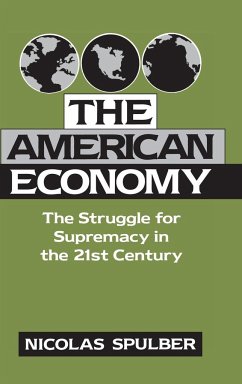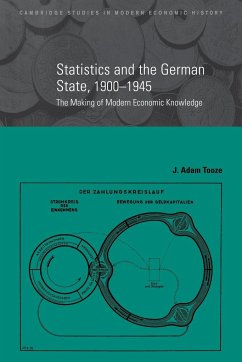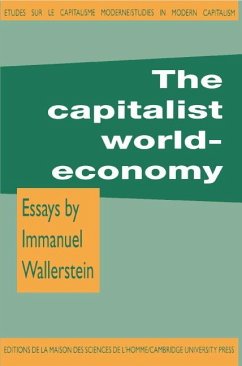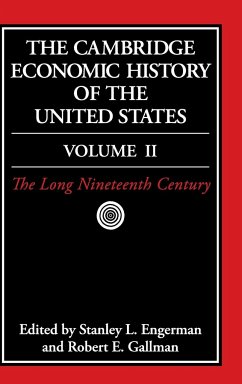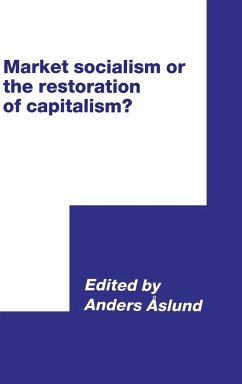
Economics and the Dreamtime
Versandkostenfrei!
Versandfertig in 1-2 Wochen
42,99 €
inkl. MwSt.

PAYBACK Punkte
21 °P sammeln!
It is a common perception that the influence of the Aborigines on British settlement in Australia was minimal. The economic significance of Aboriginal culture for the colonisers is rarely addressed and until now, has not been closely studied by an economic historian. This imaginative book presents a concept of a pre-European Aboriginal economy. It shows how an Aboriginal presence over millennia shaped the local environment and responded to it, so that the Aboriginal economy developed into an ordered system of decision-making able to satisfy the wants of the people. The book closely analyses th...
It is a common perception that the influence of the Aborigines on British settlement in Australia was minimal. The economic significance of Aboriginal culture for the colonisers is rarely addressed and until now, has not been closely studied by an economic historian. This imaginative book presents a concept of a pre-European Aboriginal economy. It shows how an Aboriginal presence over millennia shaped the local environment and responded to it, so that the Aboriginal economy developed into an ordered system of decision-making able to satisfy the wants of the people. The book closely analyses the processes which allowed economic control of a country to pass from Aboriginal to European hands within 60 years of settlement. Professor Butlin's presentation of the contrast between one of the world's most ancient economies and one of its youngest is both illuminating and exciting.
Table of contents:
Introduction; Part I. The Palaeconomic History of Aboriginal Migration: 1. Introduction; 2. Conventional views and alternative approaches; 3. Non-Malthusian issues: pathways and innovations; 4. Malthusian potential in Aboriginal migration; 5. Some possible migration scenarios; 6. Conclusion; Part II. Development, Structure and Function of Aboriginal Economy: 1. Introduction; 2. The process of early settlement; 3. Variety in pre-contact Aboriginal economy; 4. The nature and function of Aboriginal economy; 5. Dynamic elements in Aboriginal society; Part III. Disease, Economics and Demography: 1. Introduction; 2. The problem of an exposed population; 3. Re-estimating precontact numbers; 4. Turning the models around; Part IV. Establishing a Bridgehead Colonial Economy to 1809: 1. Introduction; 2. History and theory; 3. Free lunches antipodean style; 4. The general conditions of success; Part V. The Take-Over Process To 1850: 1. Introduction; 2. British development in the long run; 3. The Hunter gatherers of Empire; 4. British, American and Macassan presence in the takeover; 5. The major players; 6. Aborigines and British law; 7. Economics in the takeover; 8. The significance of disease; 9. Interaction of disease, resistance, integration and submission; 10. Conclusions; Appendices; References.
This imaginative book presents a concept of a pre-European Aboriginal economy and analyses the processes which allowed economic control of a country to pass from Aboriginal to European hands within 60 years of settlement. Professor Butlin's presentation of the contrast between economies is illuminating and exciting.
Examines the processes which allowed economic control of Australia to pass from Aboriginal to European hands within 60 years of settlement.
Table of contents:
Introduction; Part I. The Palaeconomic History of Aboriginal Migration: 1. Introduction; 2. Conventional views and alternative approaches; 3. Non-Malthusian issues: pathways and innovations; 4. Malthusian potential in Aboriginal migration; 5. Some possible migration scenarios; 6. Conclusion; Part II. Development, Structure and Function of Aboriginal Economy: 1. Introduction; 2. The process of early settlement; 3. Variety in pre-contact Aboriginal economy; 4. The nature and function of Aboriginal economy; 5. Dynamic elements in Aboriginal society; Part III. Disease, Economics and Demography: 1. Introduction; 2. The problem of an exposed population; 3. Re-estimating precontact numbers; 4. Turning the models around; Part IV. Establishing a Bridgehead Colonial Economy to 1809: 1. Introduction; 2. History and theory; 3. Free lunches antipodean style; 4. The general conditions of success; Part V. The Take-Over Process To 1850: 1. Introduction; 2. British development in the long run; 3. The Hunter gatherers of Empire; 4. British, American and Macassan presence in the takeover; 5. The major players; 6. Aborigines and British law; 7. Economics in the takeover; 8. The significance of disease; 9. Interaction of disease, resistance, integration and submission; 10. Conclusions; Appendices; References.
This imaginative book presents a concept of a pre-European Aboriginal economy and analyses the processes which allowed economic control of a country to pass from Aboriginal to European hands within 60 years of settlement. Professor Butlin's presentation of the contrast between economies is illuminating and exciting.
Examines the processes which allowed economic control of Australia to pass from Aboriginal to European hands within 60 years of settlement.





